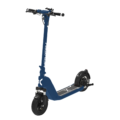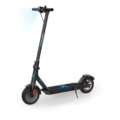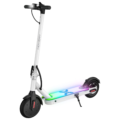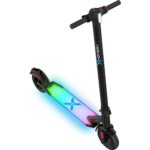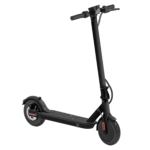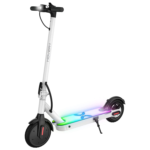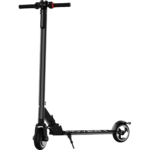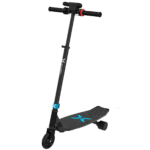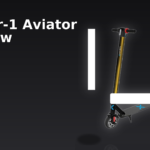- Home
- Scooters
- Electric Scooters
- Hover-1 Aviator
Hover-1 Aviator


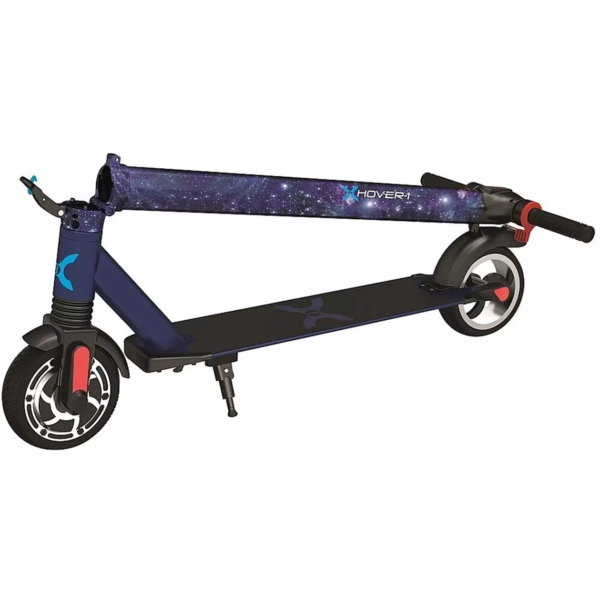

- Battery Range: 7 miles (11 km)
- Top Speed: 15 mph (24 km/h)
- Motor Power: 320 W
- Weight Capacity: 264 lb (119.7 kg)
- Charging Time: ~5 h
- Scooter Weight: 20.9 lb (9.5 kg)
PROS
- 15 mph (24 km/h) top speed for beginners
- Up to 7 miles (11 km) range for short trips
- Light 20.9 lb (9.5 kg) frame
- 6.5″ solid tires—no flats
- 264 lb (120 kg) max rider weight
CONS
- Short range vs. commuters
- Small 6.5″ wheels feel harsh on rough roads
- No app features
- IP rating not specified

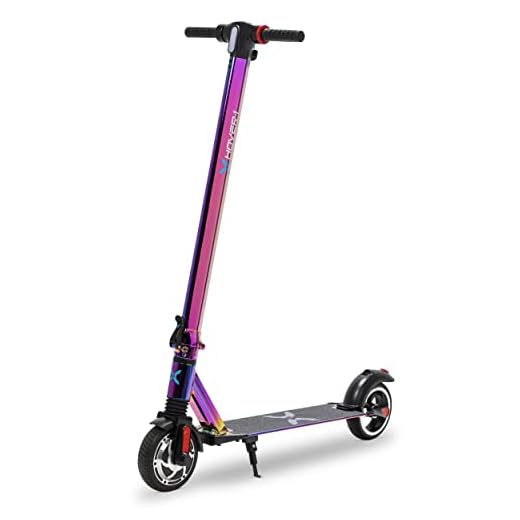
Table of contents
- What Is the Hover-1 Aviator?
- How the Hover-1 Aviator Works
- Key Specifications (clean table)
- Design & Build Quality
- Performance Fundamentals
- Battery, Range & Efficiency
- Ride Quality & Comfort
- Braking & Safety Features
- Portability & Daily Usability
- Maintenance & Care
- Weather & Seasonal Considerations
- Hover-1 Aviator vs Alternatives
- Who the Hover-1 Aviator Is (and Isn’t) For
- FAQs
- Glossary
- Final Thoughts
The Hover-1 Aviator is a lightweight, foldable electric scooter designed for short urban hops, campus rides, and first-mile/last-mile commutes. It favors simplicity and portability over brute force. If you want a scooter that is easy to carry, quick to learn, and straightforward to maintain, the Aviator may fit your day-to-day routine. For riders also researching similar lightweight options, consider the Joyor F3.
It is a compact design with a thumb throttle, an electronic front brake, and a rear mechanical foot brake. It has an LCD display with speed readout, headlight control, battery bars, and even a cruise control indicator. Most importantly, it tops out at about 15 mph (24 km/h) in its high-speed mode, which is enough for neighborhood streets and bike paths when ridden responsibly.
What Is the Hover-1 Aviator?
The Hover-1 Aviator is a compact, folding e-scooter built around a single rear hub motor and a 36-volt lithium-ion battery. As a result, it’s aimed at riders who value convenience—think students, new riders, and anyone needing a hop-on, hop-off way to bridge short city segments. The control layout is intentionally minimal. Therefore, you get a power/function button, a two-mode speed selector, a bright headlight, and a readable LCD.
Compared with larger commuter scooters, the Aviator’s modest power and small frame make it friendlier for tight hallways, stairwells, and public transit. However, it isn’t designed for aggressive hills, heavy cargo, or long distances. In practice, it’s a focused tool for short trips, and that is precisely where it shines.
How the Hover-1 Aviator Works
At a high level, think of the Aviator like a bicycle with an electric “assist” that you command with your thumb. However, instead of gears and chains, a controller smoothly meters power to a silent hub motor.
- Motor & Controller: A brushless hub motor lives inside the rear wheel and is governed by an electronic controller. When you press the thumb throttle, the controller meters power to the hub, producing quiet, predictable push. Additionally, when you brake electronically, the motor participates in slowing you down.
- Battery: A 36 V, 4 Ah lithium-ion pack powers the scooter. That equals about 144 Wh of energy, which suits short runs. Because the pack is non-removable, you charge it with the included wall charger.
- Throttle: The right-hand thumb throttle is progressive—press a little to roll gently; press further to accelerate. Furthermore, the controller requires a small kick start before the motor engages, which helps avoid accidental launches.
- Brakes: On the left, an electronic brake lever triggers motor-based braking. At the rear, a mechanical foot brake on the fender provides a direct, friction-based backup. Consequently, using both together yields the most controlled deceleration.
- Display & Modes: The LCD shows speed (mph by default), battery bars, a headlight icon, and a cruise-control icon. There are two speed levels: P1 (Low), which caps speed at about 9 mph (14 km/h), and P2 (High), which allows roughly 15 mph (24 km/h). You toggle speed with the power button and the headlight with a quick double-press.
- Cruise Control: While holding a steady speed above roughly 3 mph (5 km/h), a quick double press of the throttle enables cruise control. You’ll hear a short beep, and the icon illuminates. To exit, simply tap the brake or adjust the throttle.
Key Specifications (clean table)
Conversions are shown for both imperial and metric units. When the manufacturer does not publish an exact figure, the field is clearly indicated. These specifications reflect the compact, short-range purpose of the model.
| Block | Details |
|---|---|
| General | Model: Hover-1 Aviator (H1-AVI) • Frame: Folding aluminum alloy stem with rear fender latch • LCD cockpit with speed, battery, headlight, and cruise icons |
| Performance & Power | Motor: 300 W brushless rear hub • Top Speed: up to 15 mph (24 km/h) in High (P2); 9 mph (14 km/h) in Low (P1) • Drive: Rear-wheel hub |
| Battery, Charging & Electrical | Battery: 36 V, 4 Ah (≈ 144 Wh) lithium-ion • Charge Time: up to 5 hours • Charging Input: 100–240 V AC (wall charger included) • Operating Temp (device/charger): ~32–104°F (0–40°C) |
| Build & Dimensions | Tires/Wheels: 6.5 in (≈ 165 mm) small-diameter wheels (non-pneumatic/solid) • Deck: compact city deck • Unfolded Dimensions: not published • Folded Dimensions: Not specified by manufacturer |
| Safety & Control | Brakes: Front electronic brake (regen-assisted) + rear mechanical foot brake • Headlight: handlebar-controlled LED • Reflectors: not equipped from the factory |
| Features & Extras | Cruise Control (double-press throttle above ~3 mph / 5 km/h) • Two speed modes (P1/P2) • Simple rear latch-to-fender folding |
| Warranty & Compliance | Limited warranty: 90-day parts & labor for manufacturing defects • Regulatory: FCC compliance for onboard electronics |
Range: Manufacturer messaging positions this model for short urban range—about 7 miles (≈ 11 km) under favorable conditions. Naturally, real-world range varies with rider weight, temperature, terrain, and speed.
Design & Build Quality
The Aviator embraces minimalist construction. The stem folds down and clips onto the rear fender, which makes one-hand carrying and quick stowing simple. Meanwhile, the handlebar cluster keeps controls uncluttered: throttle on the right, electronic brake lever on the left, and a center display.
Fit-and-finish align with compact city scooters. The deck is low and narrow enough for easy foot placement, and the rear fender doubles as a mechanical brake. Cable routing is tidy, with the harness tucked close to the stem to avoid snags while folding. Because the tires are solid, there are no valve stems to worry about and no tubes to pinch. Even so, the ride is firmer than air-filled options, so relaxed posture helps.
Paint and plastics hold up to normal bumps and scuffs. Nevertheless, as with any entry-level frame, you should check the folding joint for play after the first few rides. A quick snug-up of the latch hardware keeps the hinge tight and the ride quiet.
Performance Fundamentals
Acceleration feel. In Low (P1), the scooter eases off the line and tops out at about 9 mph (14 km/h). Consequently, this setting suits beginners and shared spaces. In High (P2), the Hover-1 Aviator accelerates more eagerly; however, it remains controlled rather than snappy. On level ground, it typically settles into 12–15 mph (19–24 km/h).
Cruising stability. The short wheelbase keeps steering responsive, so the Aviator feels lively. On smooth asphalt or indoor concrete, tracking is steady. Conversely, on cracked pavement, you’ll want soft knees and deliberate line choices to keep confidence high at speed.
Hill behavior. On gentle grades of about 7–10%, momentum matters. Therefore, a short kick start plus steady throttle keeps the motor in its comfort zone. On steeper ramps or long climbs, speed falls off, which is normal for compact 300 W scooters. If needed, you can always kick along to help.
Battery, Range & Efficiency
The Aviator’s pack is 36 V / 4 Ah, which equals about 144 Wh of usable energy. With careful riding—moderate speed, smooth surfaces, and a moderate rider—expect short-hop range around 7 miles (≈ 11 km). That figure supports errands, campus transfers, and short commutes.
Why range varies:
- Rider weight: Heavier loads demand more power at a given speed.
- Terrain: Uphill riding and rough surfaces increase draw, while smooth flats reduce it.
- Temperature: Lithium-ion chemistry prefers mild conditions; cold weather temporarily lowers capacity.
- Speed & style: Holding 15 mph uses more energy than cruising at 9–12 mph.
Charging habits: The pack charges in up to 5 hours. Because it’s a fixed pack, use only the supplied charger. After rides in cold weather, let the scooter warm to room temperature before charging. In addition, for storage longer than a couple of months, top the battery up to about 50–70% and check it every 4–6 weeks.
Ride Quality & Comfort
Tires. The Aviator rides on 6.5-inch solid tires. The upside is clear: you avoid flats, pinches, and pressure checks. The trade-off is reduced shock absorption compared with pneumatic tires. Consequently, surface choice and body posture do the heavy lifting for comfort.
Ergonomics. The cockpit is uncluttered, and the deck sits low, so it’s easy to step on at stoplights. Keep elbows soft and knees slightly bent to filter out small bumps. Because stem length is modest, taller riders may ride with a slight knee bend; that’s natural on compact scooters.
Stem flex. The folding hinge introduces a potential flex point. However, when the latch is adjusted correctly, the assembly feels secure. If you notice faint play after the first week, retighten the hinge bolts per the manual. Thus, you maintain a solid, rattle-free ride.
Braking & Safety Features
The Aviator pairs two braking systems:
- Electronic brake (lever on the left): It commands the motor to slow, which feels smooth and linear. In effect, it’s “engine braking” for an e-scooter.
- Rear foot brake (on the fender): It applies friction at the rear wheel. Press down firmly with your heel for added stopping power.
Using both together shortens stopping distance and improves stability. Start with electronic braking to settle weight onto the rear wheel; then add the foot brake as needed.
Lighting. The bar-mounted headlight is controlled from the power/function button. A double-press toggles it, and an icon appears on the display. The scooter is not factory-equipped with reflectors, so reflective clothing or stick-on reflector sets are smart upgrades if local rules allow. As always, ride predictably and maintain safe spacing.
Weather guidance. The manufacturer advises against riding in rain, through standing water, or in other wet conditions. Because there is no stated IP rating, moisture can damage electronics and braking surfaces. When in doubt, wait for dry pavement.
Portability & Daily Usability
Folding & carry. The stem folds down and hooks onto the rear fender. The latch is intuitive and quick, which helps during train transfers or when stowing the scooter under a desk. While the manufacturer does not publish an official curb weight, the Aviator falls in the light-scooter class; consequently, short carries up a flight of stairs are manageable for most adults.
Storage. Store indoors in a dry, ventilated space away from heat sources. Because the pack is lithium-ion, avoid leaving it fully discharged for long periods, and avoid charging in extreme temperatures.
Security. As with any small scooter, a compact U-lock through the rear triangle or a quality chain around the deck/stem junction is the baseline. Additionally, consider removing quick-release accessories when leaving it unattended.
Maintenance & Care
Simple habits keep the Hover-1 Aviator running smoothly:
- Pre-ride checks (weekly): Confirm the folding latch is tight, handlebar bolts are snug, the headlight works, and both brakes engage cleanly.
- Tires (monthly): Solid tires need less attention; nevertheless, inspect for embedded debris and sidewall cuts.
- Brakes (monthly): Test electronic brake engagement. Ensure the rear fender brake isn’t rubbing while coasting and that it provides firm bite when pressed.
- Fasteners (monthly): Re-check stem clamp hardware and axle nuts. A quarter-turn on a loose bolt removes play and prevents creaks.
- Battery & charger: Use only the included charger. Stop charging when the indicator shows full, and allow the pack to cool after rides before charging.
- Firmware/App: The Aviator keeps things simple—no app to fuss over. Consequently, there are fewer settings to misconfigure and fewer background drains on the battery.
Wipe the deck and cockpit with a dry cloth to keep dust under control. Avoid pressure washers or wet cleaning. If moisture enters the charge port or display, wait until everything is fully dry before powering on.
Weather & Seasonal Considerations
Rain: Skip wet rides. Water diminishes braking and risks damage to electronics, especially around the hinge and charge port. If you’re caught in a drizzle, lower your speed and avoid standing water. Afterwards, dry the scooter thoroughly.
Cold: Below ~40°F (4°C), expect reduced punch and range. That’s normal for lithium-ion cells. Therefore, let the scooter warm indoors before charging, and ride at moderate speeds to conserve energy.
Heat: In hot conditions, give the scooter a rest after long continuous runs. Shade helps keep deck temperatures down, which also protects the battery. Additionally, avoid leaving the scooter inside a parked car on hot days.
Storage: For seasonal breaks, store the battery at about half charge and check it monthly. Then, top up as needed to keep it comfortable.
Hover-1 Aviator vs Alternatives
When you compare compact scooters, you’ll notice three broad families: kids/entry, mid-range commuter, and performance. The Aviator sits toward the minimal, entry-commuter end.
- Where the Aviator excels: tight urban spaces, short commutes under 5–7 miles, and multi-modal travel where folding and carrying matter more than top speed. Moreover, its cruise control, quick latch, and simple cockpit reduce daily friction.
- Where a commuter scooter may be better: longer distances, rough pavement, and rolling hills. Typically, larger wheels and higher-capacity batteries smooth bumpy streets and add breathing room on range.
- Where performance scooters make sense: riders who value high-speed stability, dual mechanical brakes with discs, wide decks, and more torque for steep hills. However, those models require more storage space, more maintenance, and a bigger budget.
If your use case is purely neighborhood errands or campus shuttles, the Aviator’s light, grab-and-go nature is the right tool. On the other hand, if your commute stretches across town or climbs significant elevation, consider stepping up a category whose specifications emphasize watt-hours and wheel size.
Who the Hover-1 Aviator Is (and Isn’t) For
Ideal for:
- Students moving between classes or dorms
- Urban riders combining short e-scooter legs with buses or trains
- New riders who prefer friendly acceleration and modest speed
- Anyone who values simple controls, cruise control, and an easy fold
Not ideal for:
- Long daily commutes where a commuter scooter’s larger battery is necessary
- Rough roads, potholes, or gravel paths that favor bigger pneumatic tires
- Steep neighborhoods that require high-torque or dual-motor setups
- Heavy cargo hauling or two-up riding (the Aviator is designed for one rider)
FAQs
1) How fast does the Hover-1 Aviator go?
In High mode (P2), it reaches about 15 mph (24 km/h). Low mode (P1) limits speed to roughly 9 mph (14 km/h), which suits new riders and shared spaces.
2) How far can it travel on a charge?
Plan around short urban range—about 7 miles (≈ 11 km) under favorable conditions. Naturally, terrain, temperature, rider weight, and speed influence results.
3) Does it have cruise control?
Yes. Hold a steady speed above ~3 mph (5 km/h), then double-press the throttle to engage cruise. The display shows a cruise icon, and a short beep confirms it.
4) Is the Hover-1 Aviator water-resistant?
There is no stated IP rating. Therefore, the manufacturer advises avoiding rain, puddles, and wet surfaces. Keep the scooter dry and store it indoors.
5) What braking system does it use?
It combines a left-hand electronic brake with a rear mechanical foot brake. Consequently, using both together provides the shortest, most controlled stops.
6) Can the battery be removed or upgraded?
No. The battery is internal and is designed to be charged with the included wall charger only.
7) Where can I find a clear “Hover-1 Aviator overview” in one place?
Right here. This page summarizes the model’s purpose, controls, performance, range, care guidelines, and a concise table of key specifications.
Glossary
- Ah (Amp-hour): A capacity measure. Multiply Ah by voltage to estimate energy (Wh).
- Wh (Watt-hour): Battery energy content. Higher Wh generally equals more range.
- Controller: The scooter’s “brain” that meters power between the battery and motor.
- Regen (Regenerative braking): Motor-based braking that helps slow the scooter electronically.
- Hub motor: A motor built into the wheel hub; compact and low-maintenance.
- Stem flex: Small movement at the folding joint or stem; reduced by tightening the latch.
- IP rating: Ingress Protection code. If unstated, avoid water exposure to protect electronics.
- Cruise control: Keeps a steady speed once engaged; disengage with brake or throttle change.
- Solid tires: Non-pneumatic tires that can’t go flat but ride firmer than air-filled tires.
- Thumb throttle: A right-hand lever you press to request power from the motor.
- Foot brake: Rear fender brake you press with your heel for mechanical stopping.
- P1/P2 modes: Low and high speed profiles selectable from the cockpit.
- Ambient temperature: The surrounding air temperature; it affects battery performance.
- Kick start: A short manual push before the motor engages.
- Folding latch: The mechanism that lets the stem fold and lock to the rear fender for carrying.
Final Thoughts
Used within its design envelope, the Hover-1 Aviator is a practical daily sidekick. It starts easily, folds quickly, and rides cleanly on smooth pavement. In addition, the cockpit helps new riders feel oriented—speed is visible, cruise control is obvious, and the headlight is a double-press away. Because it is compact, it fits under desks and by doorways without drama. And because it is simple, there’s less to fiddle with and fewer parts to service.
For short, frequent trips where convenience wins the day, the Aviator makes sense. Keep it dry, maintain the latch, ride predictably, and it will reward you with trouble-free miles.
Specifications
General
| Model The Model specifies the exact version or name of the scooter. It helps identify its unique design, features, and specifications within the manufacturer’s product line. Knowing the model makes it easier to compare options, find compatible accessories, or look up support information. | Aviator |
| Brand The Brand identifies the manufacturer or company that designs and produces the scooter. A trusted brand is a sign of quality, reliability, and good customer support. Well-known brands often have higher standards for safety, performance, and after-sales service, giving you more confidence in your purchase. | Hover-1 |
| Release Date The Release Date indicates when the scooter model was officially launched on the market. This helps you know how current the design, technology, and features are. A newer release date often means updated components, improved performance, and the latest safety or smart features. | 17 November 2025 |
| Recommended Age Recommended Age indicates the minimum age range that the scooter is designed for, based on safety, size, and ease of use. Following the recommended age helps ensure that riders can handle the scooter’s speed, weight, and controls comfortably and safely. Always check local laws and use protective gear, especially for younger riders. | 12+ |
Performance & Power
| Motor Power (Wattage) What it means: The motor power, measured in watts (W), shows how strong the scooter’s electric motor is. Why it matters: Higher wattage usually means better acceleration, more torque, and improved performance on hills or rough terrain. For example, a 250W motor is good for flat city roads and light riders, while a 500W or 1000W motor provides more power for faster speeds or climbing steep inclines. | 320 W brushless hub motor |
| Top Speed The Top Speed indicates the maximum speed that the scooter can reach under optimal conditions. It’s usually measured on level ground with a fully charged battery and an average rider weight. A higher top speed allows you to travel longer distances faster, but always ensure you ride within legal speed limits and your personal comfort zone for safety. | Up to 15 mph (24 km/h) |
| Battery Capacity Battery Capacity refers to the total amount of energy the scooter’s battery can store, usually measured in ampere-hours (Ah) or watt-hours (Wh). A higher battery capacity means you can ride longer distances on a single charge, reducing the need for frequent recharging. Keep in mind that actual range can vary depending on rider weight, terrain, speed, and weather conditions. | 36 V 4.0 Ah (144 Wh) |
| Estimated Range per Charge The Estimated Range per Charge indicates the average distance the scooter can travel on a single full battery charge. This range is calculated under optimal conditions, such as flat terrain, moderate speed, and average rider weight. Real-world range may vary depending on riding style, terrain, weather, and load. A longer range means fewer recharges and greater freedom for longer trips. | Up to 7 miles (11 km) |
| Hill Climb Ability Hill Climb Ability describes the maximum incline or slope that the scooter can handle while maintaining stable performance. It’s typically expressed as a percentage or in degrees. A higher hill climb rating means the scooter can tackle steeper hills without losing too much speed or power. Actual climbing performance may vary based on rider weight, battery charge, and terrain conditions. | Up to 10° |
| Drive System The Drive System refers to how power from the motor is delivered to the wheels. Electric scooters typically use either a hub motor (directly integrated into the wheel) or a chain/belt drive system. A high-quality drive system ensures smooth acceleration, efficient power transfer, and low maintenance. The choice of drive system affects performance, noise level, and overall ride experience. | Not specified |
Charging & Electrical
| Charging Time Charging Time indicates how long it takes to fully recharge the scooter’s battery from empty to 100% using the standard charger provided. Faster charging means less downtime and more time on the road. Actual charging time may vary slightly depending on battery capacity, charger output, and environmental conditions. | Approx. 5 hours |
| Battery Type Battery Type refers to the specific technology used in the scooter’s battery, which affects performance, lifespan, weight, and charging time. Most modern electric scooters use high-quality lithium-ion (Li-ion) batteries because they offer a good balance of energy density, durability, and low maintenance. A reliable battery type ensures consistent power delivery and longer riding ranges. | Lithium-ion pack with BMS |
| Removable Battery A Removable Battery means the battery pack can be easily detached from the scooter for convenient charging and replacement. This feature allows you to charge the battery separately, swap it with a spare for extended range, or securely store it indoors in extreme weather. Removable batteries add flexibility and make it easier to keep your scooter powered up wherever you are. | Non-removable internal battery (fixed pack) |
| Regenerative Braking Regenerative Braking is an energy-saving feature that converts some of the energy normally lost during braking back into battery power. When you slow down or brake, the motor works in reverse to generate electricity, which helps extend the scooter’s range and improves overall efficiency. This system also reduces wear on traditional brake components, leading to lower maintenance over time. | Not specified |
| Lighting Lighting refers to the built-in front and rear lights that enhance visibility and safety when riding in low-light conditions or at night. Good lighting helps you see the road ahead and ensures that other road users can see you. Many scooters include LED headlights, taillights, and sometimes brake lights or side reflectors for added safety and compliance with local traffic regulations. | LED headlight + rear LED/brake |
Build & Dimensions
| Scooter Weight Scooter Weight refers to the total weight of the scooter when fully assembled, including the battery. This affects how easy it is to carry, lift, and store the scooter when not in use. A lighter scooter is more portable and convenient for commuting, especially if you need to carry it upstairs or onto public transport. Keep in mind that a sturdy frame and quality components may add to the weight but also contribute to better durability and ride stability. | 20.9 lb (9.5 kg) |
| Maximum Rider Weight Maximum Rider Weight indicates the highest rider weight that the scooter is designed to safely support while maintaining optimal performance and stability. Staying within this limit helps ensure reliable acceleration, braking, and climbing ability, and it protects the frame, suspension, and motor from excessive strain. Exceeding the recommended limit may reduce performance and increase wear on components. | 264 lb (119.7 kg) |
| Deck Size Deck Size refers to the dimensions of the scooter’s standing platform. A wider and longer deck provides more foot space, allowing you to stand comfortably and adjust your stance while riding. A well-sized deck improves balance and stability, especially on longer rides or at higher speeds. Compact decks, on the other hand, help keep the scooter lightweight and portable. | Compact deck; beginner-friendly geometry |
| Handlebar Height Handlebar Height refers to the distance from the deck to the handlebars, which affects your riding posture and comfort. An appropriate handlebar height helps you maintain good balance, reduces strain on your back and arms, and makes steering more comfortable. Some scooters have adjustable handlebars to fit riders of different heights, while others have a fixed height for a streamlined design. | Fixed |
| Folding Mechanism The Folding Mechanism describes how easily and securely the scooter can be folded for carrying and storage. A well-designed folding system lets you quickly collapse the scooter into a compact size, making it convenient to transport on public transit, store under a desk, or fit into a car trunk. Look for sturdy latches and safety locks to ensure the scooter stays firmly in place when folded or unfolded. | 1-step quick fold |
| Dimensions Folded Dimensions indicate the size of the scooter when it’s fully folded. This measurement shows how much space the scooter will take up when stored or carried, making it easier to check if it will fit in your car trunk, under a desk, or in a closet. Compact folded dimensions are ideal for commuters who need to bring their scooter on public transport or store it in tight spaces. | Folded 38.5 × 15.7 × 16.5 in; Unfolded 38.5 × 15.7 × 44.7 in |
| Material Material refers to the primary construction materials used for the scooter’s frame and key components. High-quality materials like aircraft-grade aluminum, reinforced steel, or durable composites provide strength, stability, and a lighter overall weight. A sturdy material ensures the scooter can handle daily wear and tear while maintaining safety and performance. | Not specified |
Safety & Control
| Brake Type(s) Brake Type(s) describe the braking systems the scooter uses to help you slow down or stop safely. Common brake types include mechanical brakes (like drum or disc brakes), electronic brakes, and foot brakes. Many scooters combine multiple braking systems for added safety and shorter stopping distances. The type and quality of brakes affect your control, especially when riding at higher speeds or on slopes. | Electronic brake + rear foot brake |
| Suspension Suspension refers to the system that absorbs shocks and vibrations while riding, providing a smoother and more comfortable ride over uneven or rough surfaces. Scooters may have front suspension, rear suspension, or dual suspension for better shock absorption and stability. Good suspension helps reduce rider fatigue and improves control, especially when riding on bumpy roads or off-road paths. | Front |
| Tire Type Tire Type refers to the kind of tires the scooter uses, which directly affects ride comfort, traction, and maintenance. Common types include solid (airless) tires, pneumatic (air-filled) tires, or hybrid options. Pneumatic tires offer better shock absorption and a smoother ride on rough surfaces, while solid tires are puncture-proof and require less upkeep. The right tire type helps ensure safe handling and a comfortable ride in different conditions. | 6.5″ solid tires |
| Tire Size Tire Size indicates the diameter and width of the scooter’s tires, which affect ride comfort, stability, and how well the scooter handles different terrains. Larger tires generally offer better shock absorption and a smoother ride over bumps and rough surfaces, while smaller tires keep the scooter lighter and more portable. Choosing the right tire size helps ensure a balance between agility and comfort. | 6.5-inch |
| Kickstand The Kickstand is a built-in stand that allows you to park your scooter upright when it’s not in use. A sturdy kickstand keeps the scooter stable and prevents it from tipping over, protecting it from scratches and damage. It also makes storing and accessing your scooter more convenient, whether you’re at home, work, or on the go. | Side kickstand |
| Water Resistance Rating Water Resistance Rating indicates how well the scooter is protected against water and moisture, usually shown as an IP (Ingress Protection) rating. This rating helps you understand whether the scooter can handle light rain, splashes, or wet roads without damage. While most scooters are not fully waterproof, a good water resistance rating adds peace of mind when riding in changing weather conditions. Always avoid deep puddles or submerging the scooter to protect its electrical components. | Not specified |
Features & Extras
| Display/Console The Display (or Console) shows important real-time information about your ride, helping you monitor your scooter’s status at a glance. Typical displays show speed, battery level, distance traveled, and riding mode. Some models also include additional features like Bluetooth connectivity, app integration, or backlighting for better visibility at night. A clear and easy-to-read display enhances safety and convenience on every trip. | LCD display with speed & battery |
| Ride Modes Ride Modes refer to the different speed and power settings you can choose to match your riding style or road conditions. Common modes include eco for maximum range and energy efficiency, standard for everyday balance, and sport or turbo for higher speed and stronger acceleration. Switching between ride modes allows you to customize performance, conserve battery, and ride safely in various environments. | 2 speed modes (P1/P2) |
| Smart App Connectivity Smart App Connectivity lets you pair your scooter with a dedicated mobile app via Bluetooth. Using the app, you can monitor real-time ride stats like speed, battery level, and range, adjust settings such as ride modes or cruise control, lock the scooter for added security, and sometimes receive firmware updates. This feature adds convenience and allows you to personalize your riding experience right from your smartphone. | No app |
| Anti-Theft System The Anti-Theft System helps protect your scooter from unauthorized use or theft. This feature can include built-in alarms, electronic motor locks, GPS tracking, or remote locking through a mobile app. A good anti-theft system provides peace of mind when parking your scooter in public spaces, adding an extra layer of security to safeguard your investment. | None |
| Cruise Control Cruise Control allows you to maintain a steady speed without continuously holding the throttle. This feature makes longer rides more comfortable by reducing hand fatigue and providing a smoother, more relaxed riding experience — especially on flat, open roads or bike lanes. For safety, cruise control can usually be easily activated or deactivated while riding. | Not specified |
| Accessories Included Accessories Included lists the additional items that come with the scooter to enhance your riding experience and convenience. Common accessories may include a charger, kickstand, bell, lights, phone holder, or carrying strap. These extras add value by making your scooter safer, easier to use, and ready to ride straight out of the box. | Scooter, wall charger (AC 100–240 V), manual, hex key |
Warranty & Compliance
| Warranty Period The Warranty Period indicates how long the manufacturer guarantees the scooter against defects in materials and workmanship under normal use. A good warranty provides peace of mind, showing the brand’s confidence in its product quality. Always check what parts are covered, such as the frame, battery, and motor, and follow the maintenance guidelines to keep your warranty valid. | 90 days limited (manufacturer defects) |
| Certifications Certifications confirm that the scooter meets specific safety, quality, and environmental standards set by recognized organizations or regulatory bodies. Common certifications may include CE, RoHS, UL, or other local compliance marks, depending on your region. These certifications ensure that the scooter is manufactured to high standards and is safe and legal to use in your country. | UL 2272 certification noted by some retailers; region-dependent |
Price Comparison




